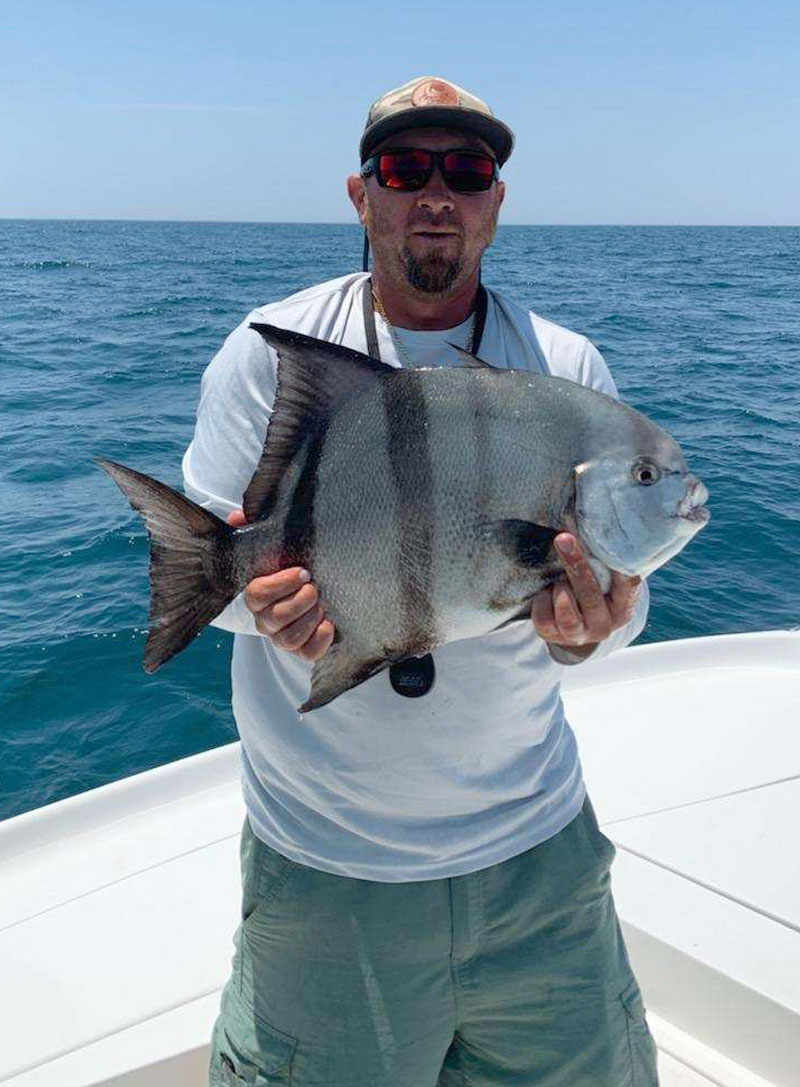
Spadefish have small but loyal following among Carolina anglers
Summer is here, and anglers of all kinds hit the water for some vitamin D and a little reel therapy. Both the inshore and offshore grounds offer opportunities all summer. But for anglers looking for something different, nearshore reefs are firing off on all cylinders with spadefish, a striped favorite that many anglers have yet to discover.
Dan Connelly of O-Fish-Al Expeditions is a jack-of-all-trades for inshore and nearshore adventures around Murrells Inlet, S.C. And spadefish are some of his favorite fish to target when the water gets hot. Spadefish are beautiful creatures. And these black-and-white-striped fish are brutal combatants and tasty on the dinner plate.
“Spadefish are super fun to catch. And summer is the best time to go after them,” said Connelly (843-241-7022). “But fishing for spades is much different than catching sheepshead or sea bass at the reefs. They can be very difficult to catch unless you incorporate the right techniques.”
Find one, you’ll find the whole school
Spadefish are a reef species. They always travel in schools, holding around reefs or oceanic structures 3 to 25 miles off the beach. They eat crustaceans, worms, plankton and jellyfish-like creatures. But their kryptonite is the cannonball jellyfish, aka jelly balls. Anglers can easily scoop up these brown-topped jellyfish around inlets and sometimes in the entrance to the estuaries. Spadefish will mob a school of jelly balls and rip them to shreds until there isn’t a morsel remaining.
Not only do spadefish travel in schools for protection, but they also have excellent eyesight that can pose an issue to anglers in super-clear water. Consequently, the technique for catching them is quite different: sight-fishing. But first, anglers must get the fish to the surface.
“If the fish aren’t clearly visible once you get anchored above the structure, take a whole jelly ball (threaded onto a rope or line) and drop it down to the reef structure,” Connelly said. “Once the fish start pecking at the jelly ball, slowly raise it towards the surface, and the fish will follow.”
Hold on for dear life when these fish take your bait
When they are visible, Connelly will utilize a stealthy approach to target a specific fish or put his bait in the heart of the school.
“One must take a very finessed approach for catching large spadefish,” he said. “(They) have terrific eyesight. And in the clear water, you must use thin, fluorocarbon leader and a small hook without any other terminal tackle.”
A long, fluorocarbon leader ranging from 10- to 20-pound test and anywhere from 4 to 7 feet long is required. Connelly uses a small, No. 1 or 1/0 bait-holder hook either free-lined or with a small split-shot, and he cuts pieces of jelly ball for baits.
Spadefish go into a feeding frenzy when they start pecking at the jelly ball on the string, and small pieces will free-fall all around. Anglers can cast to a specific fish or can just put the small chunk of jelly ball with hook hidden right in the center of the cloud of chewed-up chum. When the spadefish take the bait, anglers should set the hook and hold on for the fight of their life. Spadefish don’t give up easy and take off towards the reef as soon as they feel any tension.
Spadefish are a unique fish to target and they can be a blast on light tackle during the middle of the summer.


Be the first to comment